Explorer ST goes to new lengths for 2020
By John Gilbert
The SUV craze may come and go — although as we head into 2020 it looks like it has come to stay — but as names and shapes and sizes fluctuate, there will always be an Explorer.
Ford sells Explorers the way other companies can only dream about, and for 2020, the Explorer takes a large leap forward.
There are various Explorer models in the 2020 lineup, including a hybrid, and a so-called base 4-cylinder model, with all sorts of trim options up to the loaded Platinum maximum. The one that caught my eye at first, however, is the sporty ST model, and by good fortune, that is the one I got for my fkirst road test of the new Explorer.
If theres was a perfect time for examining how the new Explorer might cope with wintertime on the North Shore of Lake Superior, this has been the year for it. One report said that snowfall through mid-January is normally 30 inches, and this winter it was 70 inches.
To handle such challenges all the Explorers for 2020 ride on a new platform that is significantly different from the 2019 face-lifted version of the popular midsize SUV. Foremost is that the Explorer now rides on a platform that is rear-drive oriented, while all previous Explorers were on a front-wheel-drive platform. The new platform is long enough to house three rows of seats inside its 199.3-inch overall length, and it has a wider stance of 78.9 inches to better plant the vehicle, with the clear benefit to the spacious interior.
The ST has assorted sporty touches, such as the twin chrome exhaust tips on either side of the rear end, and four pipes should be enough to extract all the exhaust from the 3.0-liter V6, which is twin-turbocharged to run away from the very swift standard-issue Explorers, such as the XLT with its potent 300-horsepower/310-foot-pound 2.3-liter Ecoboost 4. The ST’s new 3.0 has a whopping 400 horsepower and 415 foot-pounds of torque.
That’s enough to send the Explorer ST from 0-60 miles per hour in a mere 5.3 seconds, and it can reach 100 in a quarter-mile dash in about 14 seconds. The base four-cylinder reaches 60 in a very respectable sub-7-second run, which is good for a vehicle of this size, but is left behind when the ST, despite 4,860 pounds, makes its run.
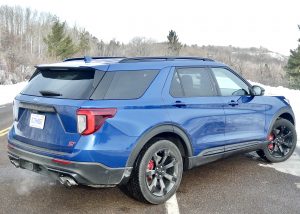
Roomy enough for optional third-row seats, and added storage, the Explorer also features 4-pipe exhaust on sporty ST model.
The ST is not just for show and sportiness. It does not shirk its work capability with a 5,000-pound towing weight, or its people-hauling requirements..
Part of the enjoyment of evaluating new vehicles is trying to guess at the reasoning behind the changes, or what might be coming next. I figure the Explorer has grown in size to take care of those folks who want a third-row seat, and also to make room for an all-new Escape, just out for 2020, and if moving the Explorer up a bit closer to the Expedition, it leaves more room for the Escape — and for the return of the Bronco to Ford’s stable. as an all-new SUV with an old name.
The Explorer has the refined compromise of being bigger and roomier but not handling bigger. It has a performance suspension package that lets it corner sharply and you can play with the settings with a knob on the console that goes from economy to normal to sport, and the sport setting works to tighten steering and firm up the suspension.
On the outside, short overhangs front and rear make for an interesting design and enhances any off-roading you might want or need to do. And the 21-inch alloy wheels — black on the ST — respond well to the urgings of the 10-speed automatic transmission, which shifts often and smoothly, but which also can hold its shifts if you’re in sport.
The Explorer ranges in price from $37,000 up to the ST test vehicle’s stiff tag of $59,520, and while you can find numerous midsize SUVs for that or less, you have to experience the new Explorer to realize it feels like it can compete with larger and costlier SUVs. And, without question, the bulk of that money’s-worth is on the inside, where creature comforts surround you in every way in ST trim.
The leather bucket seats, with contrast stitching, are firm and comfortable, with buckets in the front and second rows that are heated. Rumor has it that the fronts are also cooled, although in January in Northern Minnesota, that’s one of those features you don’t bother testing. The spaciousness of the front seats becomes remarkable in the second row, where the seats have plenty of legroom.
The neat part is that at the push of a button, you can make the seat slide fore and aft, and the backrest folds down at another touch. The height of the second row buckets gives them room to fold out of the way for entry to the third row bench seat, which works, although might be reserved for kids or small adults. Of course that third row seat folds down, and enlarges the storage space under the hatch.
Back up front, the driver gets both serviced and entertained from the cockpit-style layout. A large, horizontal instrument cluster greets you as you enter with a beautiful and artistic vision of mountains and billowing clouds in the sky, and, if it’s late enough, a gigantic moon is rising from out of the mist. Of course it changes over to serious business when you start the car with the push-button located on the horizontal space between the console and the dashboard.
Then you check the navigation screen for information, and be prepared: At 10.3 inches, that vertical screen is about the size of an iPad, and it loaded itself up with information, including the normal audio or climate control settings. When you shift into reverse, you not only get the direct rear-facing camera shot of where you’re heading, but you also get the overhead 360-degree view of the vehicle — complete with a darkened area that indicates you have the ST package’s double-size sunroof, which Ford calls a moonroof.
The high-tech B&O audio system is also something special, sending lots of sounds to 14 speakers in the ST, and the separation of sounds from those speakers puts this whole system up with the highest level of vehicle audio.
Living in the snow belt gives you some special needs, and the Explorer ST handles them all with safety features including park assist, automatic LED headlights that cut through the snowflakes in a storm and turn night into virtual day. A small feature is the capless gas filler. When it’s below zero, and you’re at the gas pump, you plug in your credit card, grab the nozzle, flip the filler door open, and just stick in the nozzle without taking off your other glove to unscrew a cap.
My wife, Joan, liked everything about the Explorer ST, but if she had to pick a favorite item, it might be that while standing in the kitchen, looking out at the Explorer parked 100 feet away, under the result of an overnight snowstorm, you just hit the key fob to watch its lights blink and the remote starter firing up that engine. Take a few minutes to bundle up for the short walk, and the Explorer is warmed up, seat-heater and defroster already warm, and you’re all set to go to work, to the mall, or to go…Exploring.


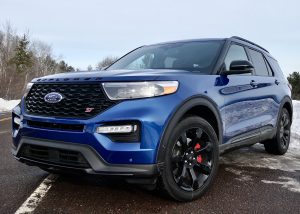
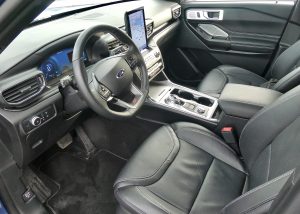
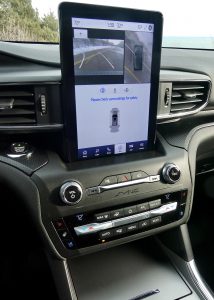
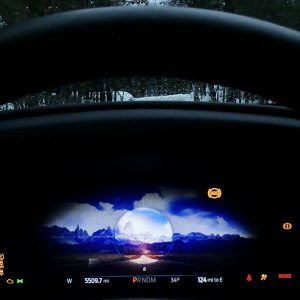
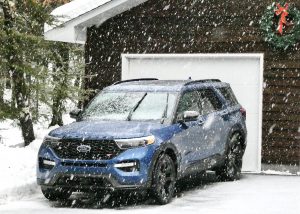
 John Gilbert is a lifetime Minnesotan and career journalist, specializing in cars and sports during and since spending 30 years at the Minneapolis Tribune, now the Star Tribune. More recently, he has continued translating the high-tech world of autos and sharing his passionate insights as a freelance writer/photographer/broadcaster. A member of the prestigious North American Car and Truck of the Year jury since 1993. John can be heard Monday-Friday from 9-11am on 610 KDAL(www.kdal610.com) on the "John Gilbert Show," and writes a column in the Duluth Reader.
John Gilbert is a lifetime Minnesotan and career journalist, specializing in cars and sports during and since spending 30 years at the Minneapolis Tribune, now the Star Tribune. More recently, he has continued translating the high-tech world of autos and sharing his passionate insights as a freelance writer/photographer/broadcaster. A member of the prestigious North American Car and Truck of the Year jury since 1993. John can be heard Monday-Friday from 9-11am on 610 KDAL(www.kdal610.com) on the "John Gilbert Show," and writes a column in the Duluth Reader.